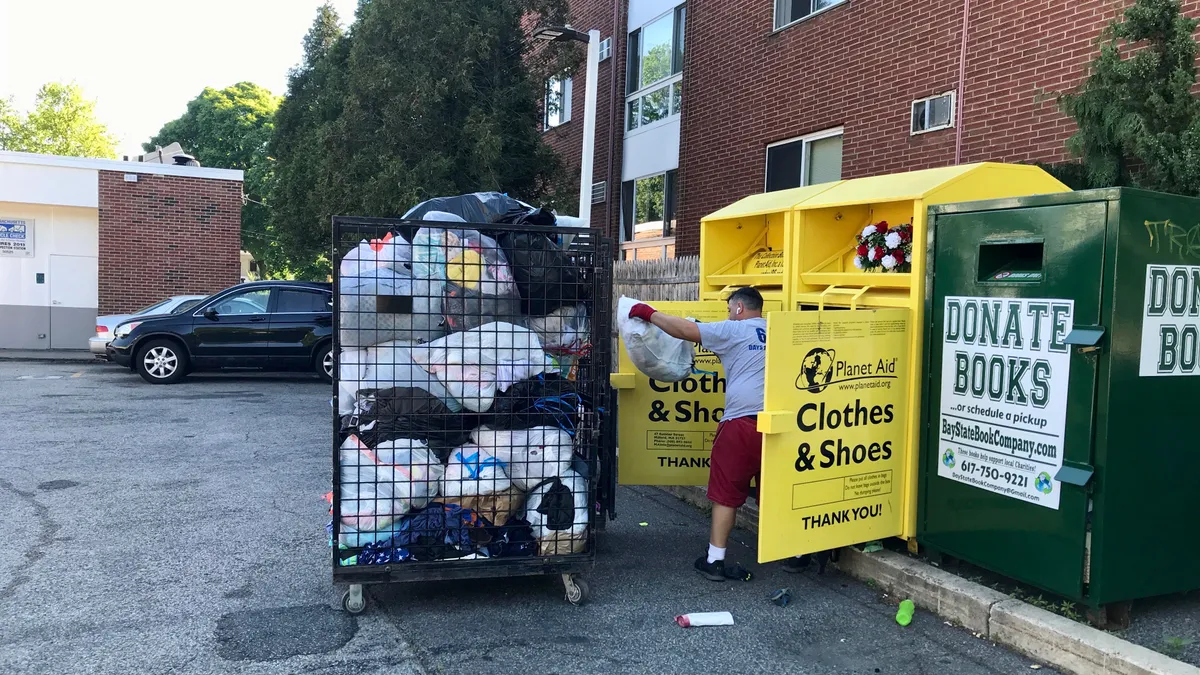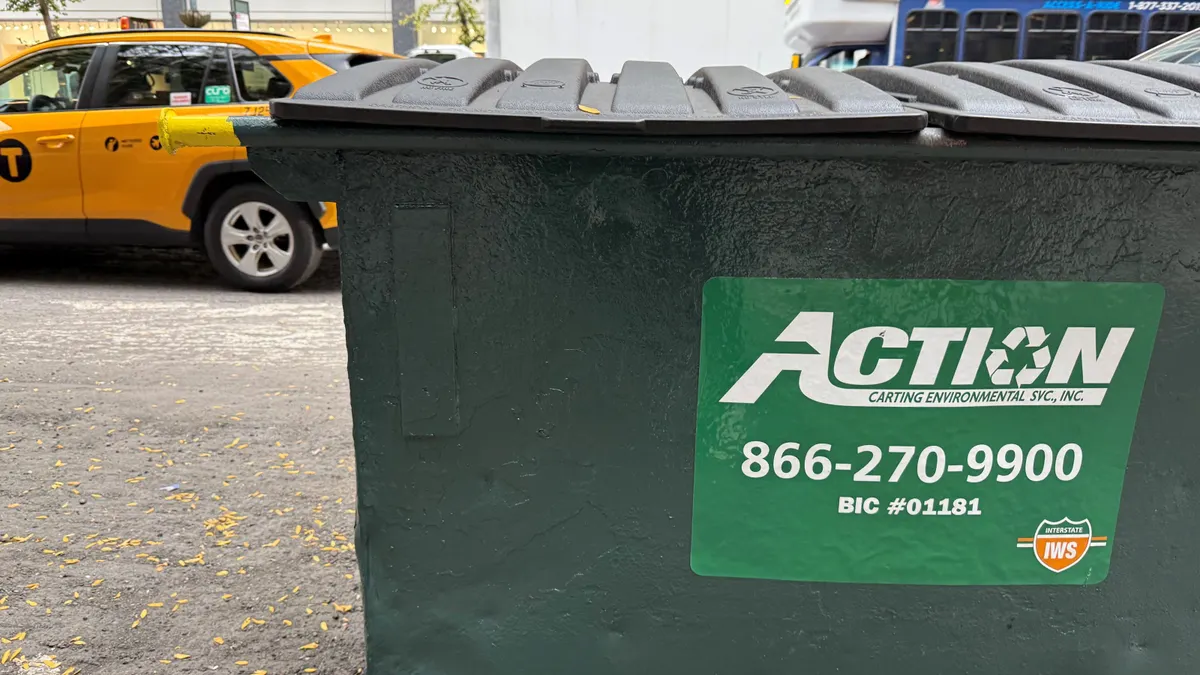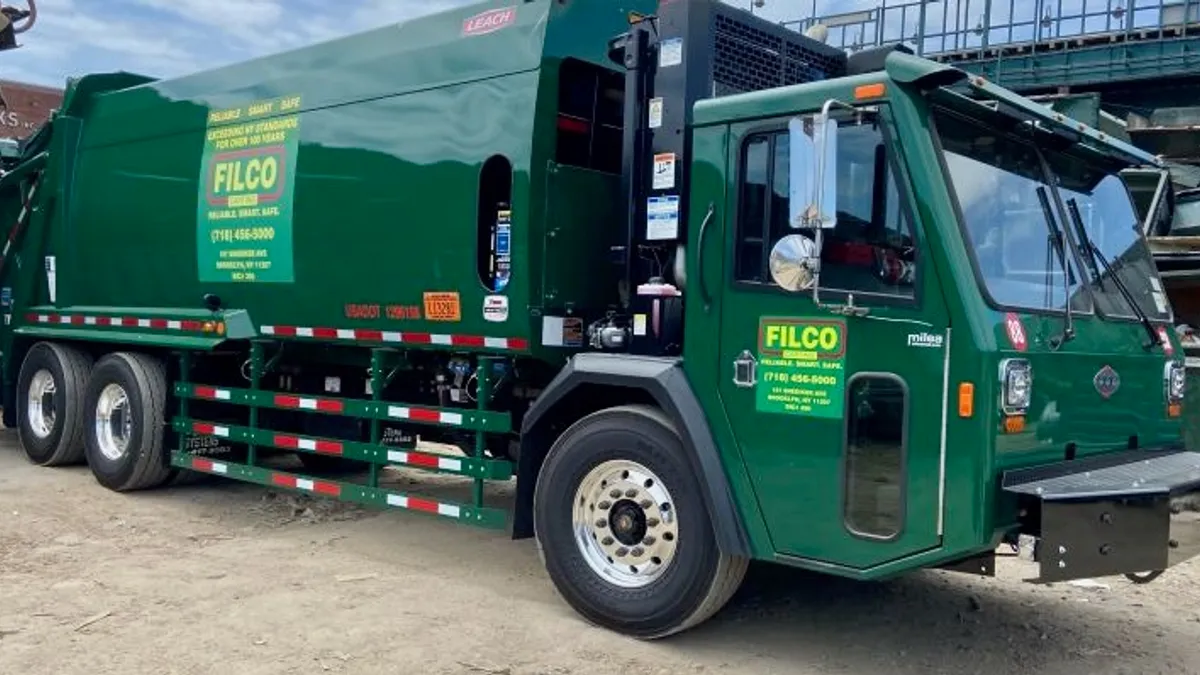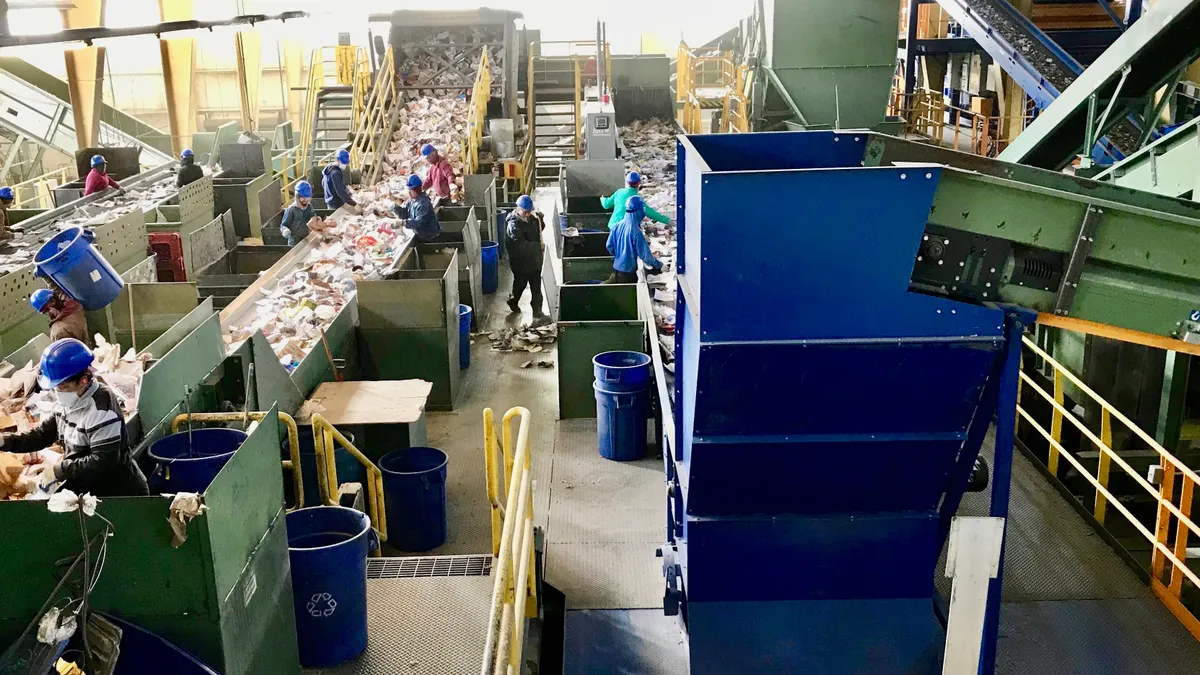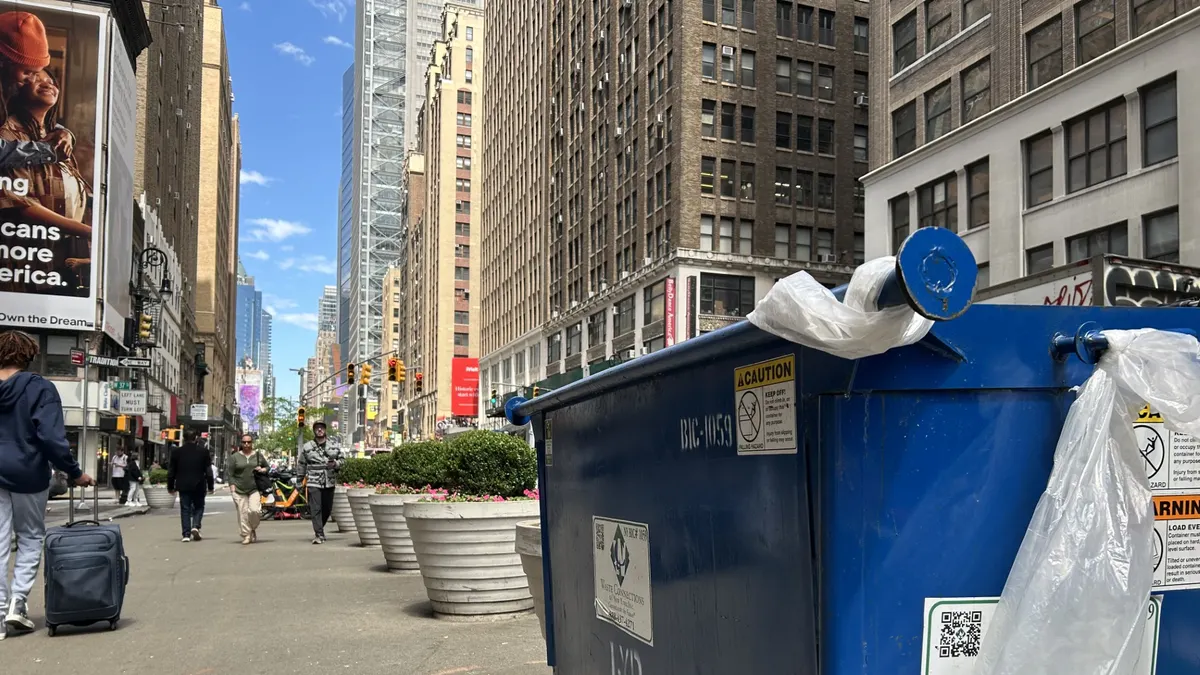The coronavirus pandemic has sent municipal budgets reeling, in some cases leading to cuts for non-essential waste services. But as local governments are forced to get more thrifty this may present a new opportunity to tackle one of the fastest-growing categories of waste – clothing.
Previously, thanks to the high value of used clothes resold into the secondhand market, textile recycling has mostly been a service that companies offer to municipalities free of charge – or sometimes even pay them to provide. This unique set-up is why, prior to the pandemic, interest in expanding textiles collection services to include curbside pick-up was growing in some cities as a way to meet encroaching "zero waste" targets.
Boston, for example, was preparing to announce an arrangement in April for service provider Helpsy to offer curbside textile recycling to residents. That plan has since been postponed “in the interest of maintaining safety for all stakeholders during the COVID-19 pandemic,” said Superintendent of Waste Reduction Brian Coughlin. Instead, he said, the city will continue clothing drop-off drives this year and look to install “permanent textile drop-off locations throughout the city to help increase participation and awareness.”
Yet even as cities continue to experience operational or budget challenges, there are those who believe the economic restraints local governments are experiencing could make textile recycling more attractive post-pandemic. That is, if the fragile, global market for secondhand clothing holds together. As recyclers and sustainability advocates target higher collection rates, some are concerned these end markets may be a missing piece of the puzzle, particularly amid massive pandemic-related disruptions.
Local opportunities
Though Boston paused its curbside plans for the time being, other cities have moved forward with pilot programs.
Shortly after cutting funds for its zero waste initiative in early May, Philadelphia announced a partnership with Retrievr to provide curbside pick-up of residential textiles and electronics. Rachel Kibbe, the company’s director of circularity, said the city's main role is to help market its relationship with Retrievr to increase participation.
Currently, the national recycling rate for textiles is only 15%, which Kibbe speculates is because many people either aren’t aware of these services or options aren't readily available.
“[Textile collection] rates are stagnant because of lack of convenient solutions,” said Kibbe in a recent WasteExpo panel, emphasizing the importance of curbside services over the more common method of “depending on people to haul their own things to a drop-off point."
"Because of this inconvenience, people don’t do it… And it’s a huge cost burden to taxpayers and municipalities. So the first order of business is collecting more and getting it into the systems that exist," she said, making a comparison to traditional curbside recycling services by saying “it should be as easy as it is for bottles and papers and cans.”
While curbside is convenient, it still comes at its own cost. The average household will produce enough bottles and cans to warrant a consistent pick-up schedule, but textiles are disposed less frequently. While Retrievr does not charge cities for the cost of pick-ups, it does sometimes charge residents a “convenience fee" depending on a number of factors – namely the current value of the items being picked up. This model is not uncommon among service providers for other specialized offerings that may not be part of a city collection contract in some areas, such as organics collection.
“Modest convenience fees to consumers for our collection service are helpful,” Kibbe said, “especially at a moment in which apparel end market commodity prices are at an all-time low and supply at an all-time high. Even under normal market circumstances, these market values are low and variable, therefore undependable.”
Helpsy CEO Dan Green said curbside can be expensive behind the scenes, in terms of labor and other factors. This is why partnerships with cities are important, he said, to help create enough volume for routes to be worthwhile for haulers. Currently, this is a service Helpsy provides for free. One example of how this could work is residents would go online (ideally through a city website) and request a pick-up based on their zip code, with the city providing input to the company on the most efficient approach.
“You’d have days of the week that are assigned to you that we've worked out with the city to be convenient for the residents and convenient for other sanitation programs. And we try to build a route that maximizes how full the truck is in the day," said Green.
Recyclers say this more hands-off model for local governments could allow haulers to make the argument that curbside textile service is a clear benefit.
“Cities don’t pay for textile diversion; private haulers like us do,” said Kibbe. “Therefore, municipalities should welcome textile diversion services now, more than ever, because they save tax dollars spent on hauling textiles to landfills unnecessarily. Less clothing sitting idle in homes means fewer landfill fees, and also less contamination in the traditional waste stream.”
Green said his experiences servicing drop-off bins in other cities confirm the relationship between textile recycling and affordability. Textile recycling, he observed, works in a symbiotic manner with other municipal policies like pay-as-you-throw (PAYT) that aim to reduce costs and disposal.
In Malden, Massachusetts, for example, which has a PAYT system, Helpsy's drop-off bins are filled with “probably four times more textiles than our next heaviest spot out of our thousand locations,” as residents are motivated to reduce the weight of their garbage bags to keep their collection fees low. “It is an unholy amount of stuff," said Green.
Helpsy also commonly sees items other than clothing – especially TVs – frequently accumulate at these bins, which Green views as another argument in favor of curbside service. While Malden launched its own curbside service with a different company last year, that has been on hold due to the pandemic.
Uncertain markets
Despite all the talk of increasing collection rates, textiles are also subject to a fragile global market dynamic that warrants consideration. While the high value of thrift has enabled the commodity of textiles to remain a relatively profitable endeavor until now, that could possibly change in the future.
Hilde van Duijn, a senior project manager at the Amsterdam-based nonprofit Circular Economy who helps develop circular programs for textiles, said during WasteExpo part of the reason the collection rate has remained stagnant is because “there’s just no financial incentive.” She looked to her experience working on an EU-funded project as one example.
“Even though we’ve created this automated sorting technology that is running, operating, sorts 900 kilos an hour of used textiles based on fiber composition and color, there are still missing steps between this sorting facility and a chemical recycling plant," said van Duijn. “There are no valuable destinations for all these additional textiles that you would be collecting. So just to add a little bit of urgency for it: If we want to raise collection rates, it’s crucial that there are these alternative, valuable [destinations].”
Securing end markets, she argued, should be something public and private stakeholders consider in advance to avoid a fate similar to what is taking place in other recycling markets, where volume sometimes exceeds demand.
In the United States, this dynamic has recently grown even more volatile. Jackie King of the Secondary Materials and Recycled Textiles Association said while volumes of used textiles are up, commodity pricing “may be down in some areas." Kibbe confirmed the intensity of the impact, saying while volumes were soaring — likely a result of consumers spending more time cleaning their homes — apparel end market commodity prices are currently at an “all-time low.”
Green speculated the drop in prices was a result of reduced sorting capacity and import restrictions. For example, Kenya – a major end market for used clothing – implemented a COVID-19-related ban on the importation of secondhand textiles and shoes in April that was just lifted in August.
“I think the financial prospects of the industry were just devastated by this,” said Green. “It's a low-margin, poorly capitalized industry to begin with and then prices dropped a lot. So a lot of people shut down and might not come back.”
However, for those able to stay in business, waiting out this period still could be worthwhile. Even though Helpsy’s curbside expansion in Boston remains on hold, Green said the company is continuing to operate drop-off bins across the Northeast and never stopped during the pandemic. This August, Helpsy saw its biggest volumes yet. He's hopeful that as business picks up – possibly with more local government interest as budgets constrict – prices will too.

